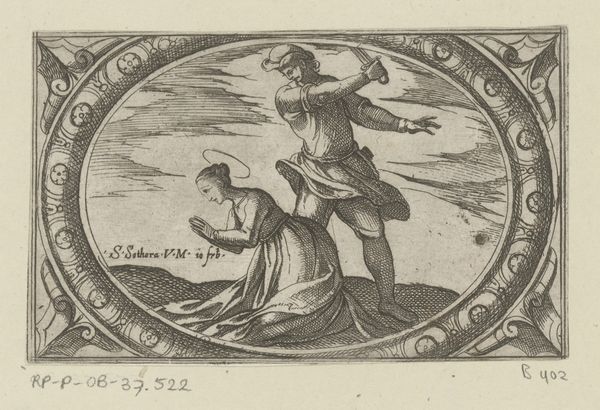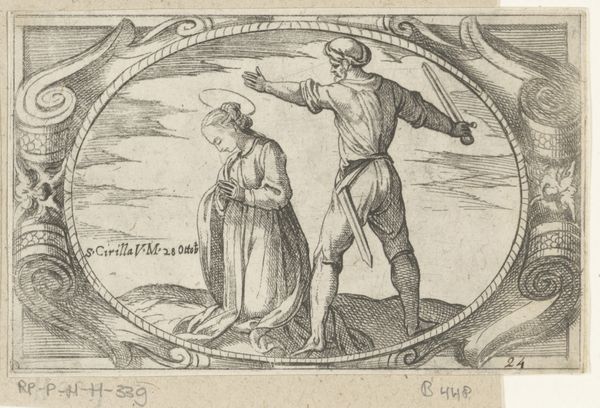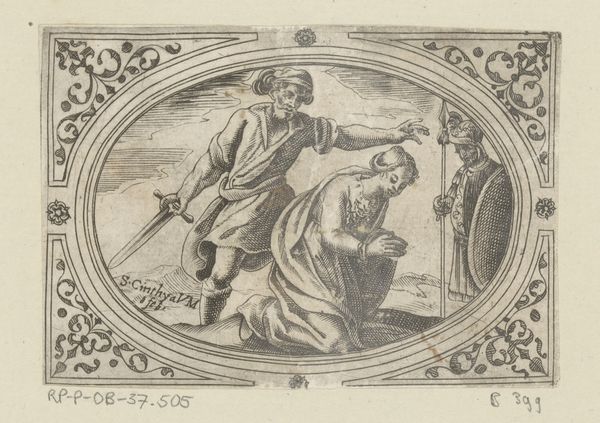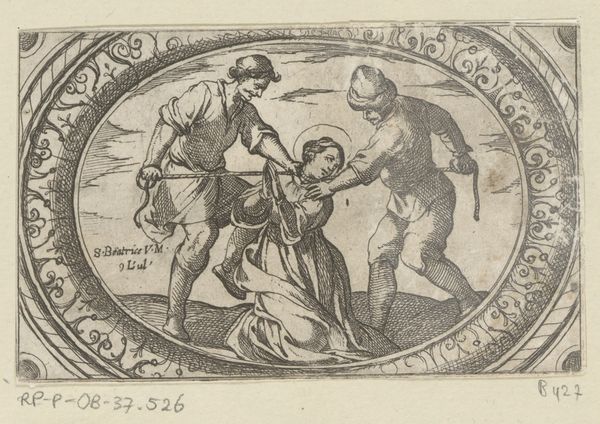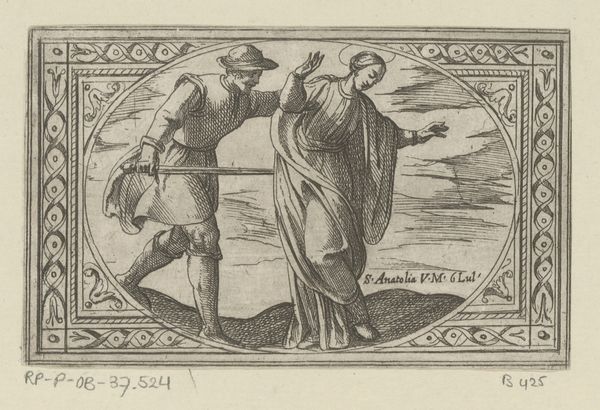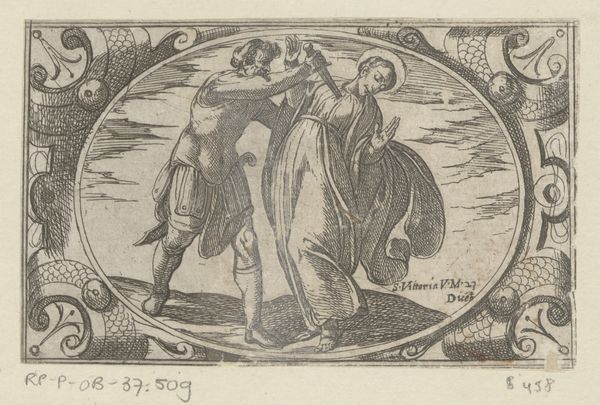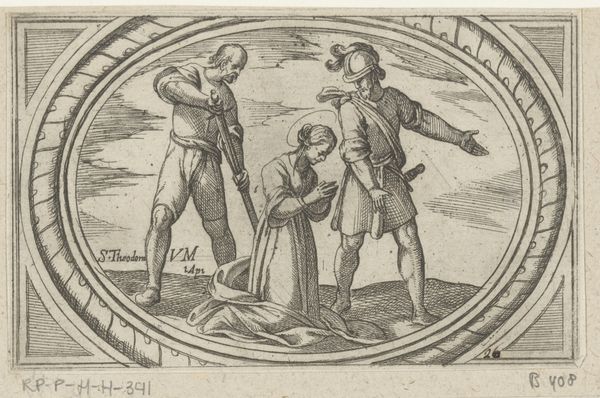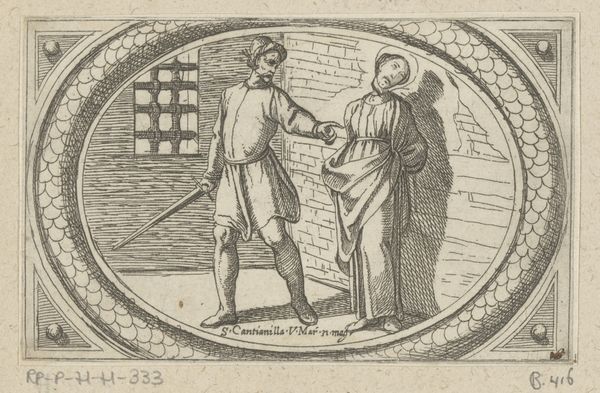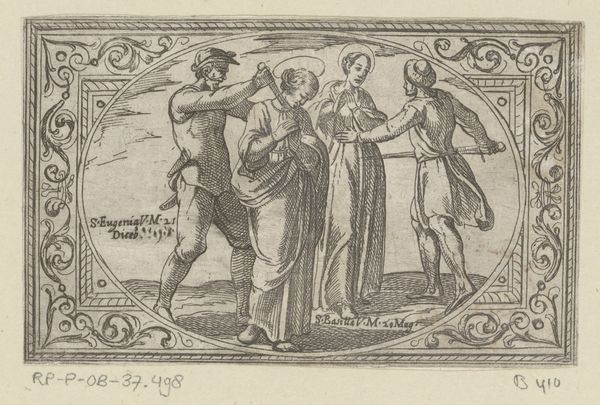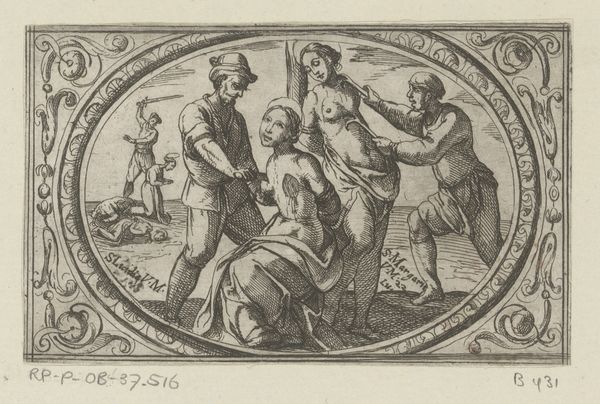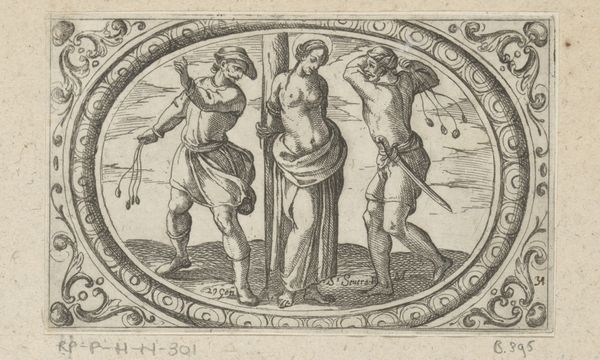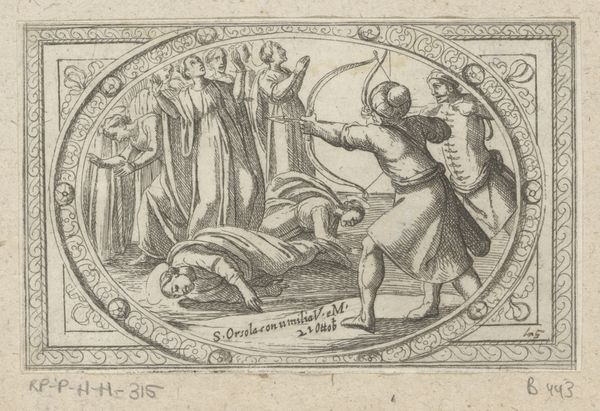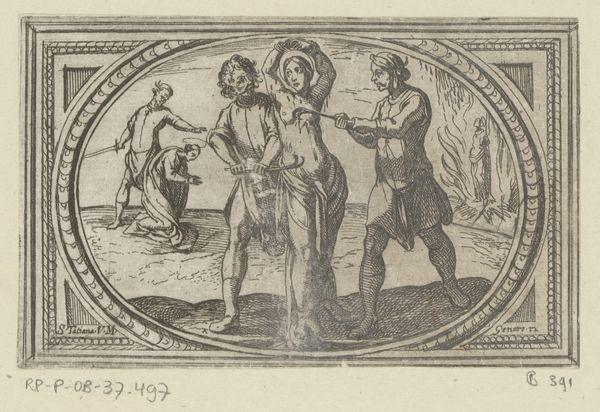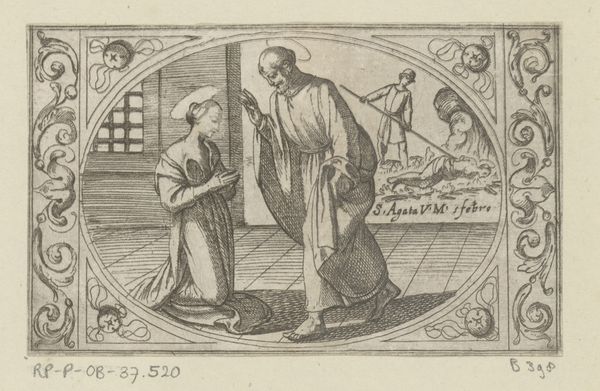
#
comic strip sketch
#
light pencil work
#
pencil sketch
#
old engraving style
#
cartoon sketch
#
personal sketchbook
#
pen-ink sketch
#
sketchbook drawing
#
pencil work
#
sketchbook art
Dimensions: height 73 mm, width 114 mm
Copyright: Rijks Museum: Open Domain
Curator: Looking at this image, I'm immediately struck by its intensity, its drama is palpable despite the relatively small scale and monochromatic nature. It feels like a captured moment of high tension. Editor: Indeed. What we're viewing here is a work by Antonio Tempesta, believed to have been created between 1565 and 1630. It’s titled “H. Columbina, de dochter van H. Austerius,” currently held at the Rijksmuseum. It depicts the martyrdom of Saint Columbina. Curator: The saint's posture is quite interesting, she’s kneeling, but her arms are outstretched in what appears to be a gesture of acceptance or prayer. What do you make of that composition, knowing its cultural history? Editor: Martyrdom scenes, especially those of female saints, often presented a blend of submission and defiance. Her pose visually confirms her faith and acceptance of divine will, which in turn inspired strength and defiance of worldly power in those viewing it. I’m always struck by the power that political symbolism holds through such depictions. Curator: Absolutely, this image is not just about religious devotion. There’s definitely a political message embedded within it. The sword hovering over her is heavy with the symbolism of religious conflict, and the contrast between her calm and the soldier’s aggression adds to the sense of injustice. How might this engraving been received in its day, given the religious and political climate of the time? Editor: During the 16th and 17th centuries, depictions of martyrdom served various socio-political roles. They were used to promote religious orthodoxy, but they also operated as visual propaganda in periods of religious conflict, fueling debates about authority and justice. I can’t help thinking about who commissioned it and for what purpose. Curator: That adds a new layer to it, for me. When viewing, I try to read the intention or cultural memory it intends to communicate. Editor: Precisely. Considering all of this, it certainly reshapes our perspective on a relatively unassuming drawing.
Comments
No comments
Be the first to comment and join the conversation on the ultimate creative platform.
